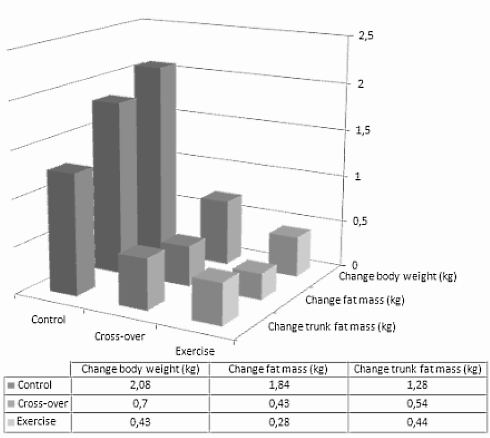|
Obesity doesn't have to stand in the way of building muscles
Obese men in their twenties who lift weights can build up as much muscle mass as their slender peers. English sports scientists report this in Physiological Reports.
Anabolic resistance
If you have to rely on animal studies, it does not make much sense for people with severe obesity to do strength training. If you fatten rats and mice, then their muscles lose the ability to grow. The animals just don't respond to continuous intensive physical exertion anymore like lean animals. They have become, as exercise scientists like to say, 'anabolic resistant'. [J Physiol. 2009 Dec 1;587(Pt 23):5753-65.] [J Appl Physiol (1985). 2010 Jan;108(1):7-13.]
But what about people? Do humans, just like rats and mice, lose the ability to build muscle protein when they become fat? The studies are not clear about this. [Diabetes. 2015 Sep;64(9):3160-71.] And so English sports scientists, who are affiliated with Loughborough University, decided to sort things out.
Study
The researchers got 8 slim and 9 obese twenties training their leg muscles on a leg-extension machine. They took samples from the leg muscles, and determined the production of muscle proteins in the leg muscle cells during rest and after strength training.
Results
In both the obese and the slim men, strength training increaed the production of muscle proteins by about fifty percent. The production of muscle protein [FSR] was indeed a bit smaller among the obese men, but the difference was small.

BMI and fat percentage had no effect on the production of muscle protein at rest, nor on the increase in the production of muscle protein by strength training.


Conclusion
"In conclusion, we have shown that obese young adults respond to an acute bout of resistance exercise with an increase in muscle protein synthesis that is comparable to that of their lean counterparts", write the researchers. "We also found no evidence for obesity induced impairments in anabolic signaling."
Source:
Physiol Rep. 2018 Jul;6(14):e13799.
More:
Strength training fights belly fat better than aerobic training 19.02.2015
Obese teenagers benefit most from a combination of strength training and cardio 21.10.2014
Overweight people can best combine cardio and strength training 28.01.2014
Archives:
Strength Training
 |
 |
 |
|
Strength training helps keep post-menopausal women slim
Women who are past the menopause gain 0.7 kg weight every year. And their waist measurement increases by 0.7 cm each year too. Not exactly an encouraging prospect, but according to researchers at the University of Arizona it's possible to do something about this.
|
Strength training + active lifestyle more than halves chance of diabetes
Half an hour of strength training per day, or three 50-minute sessions a week. That's the amount of strength training that reduces your chances of developing type 2 diabetes by a third. And if you do a bit of cycling, walking, swimming or running as well your chance of developing diabetes can go down by sixty percent.
|
Combination training speeds up weight loss
The combination of cardio training and strength training helps weight loss more than cardio training on its own and more than strength training alone.
|
|





